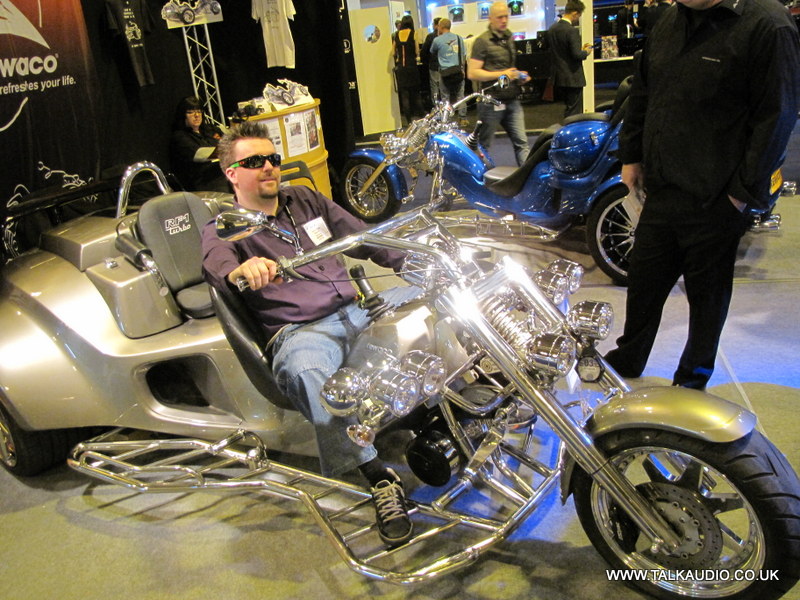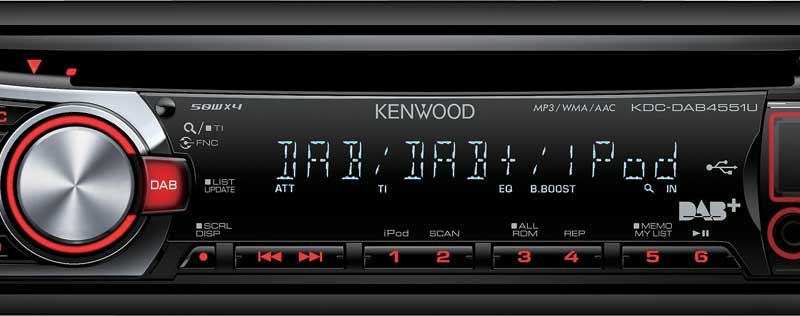Kenwood KDC-DAB4551U MP3/WMA/AAC/CD/USB Radio with AUX In & built-in DAB
Long Term Test By Simon King
After sterling efforts at both Mobile Electronics News Expo and the Gadget Show Live this spring, Simon King was stumped this DAB deck as long as he was also whipped into a full long term review and by crikey, it’s a cracker. He shows knowledge of biofeedback in mechanical engineering, (that’s buttons) and also deep grasp of digital compression and file handling tech as well as radio transmission. He’s good.
Ed
Product Details KDC-DAB4551U
Manufacturer: Kenwood
Website: link
Typical Selling price: £99.99
DAB has had a rocky time with ICE manufacturers. When it was all new and shiny, every one of them produced an aftermarket add-on box to enable easy upgrades. Problem was, this custom designed silicon was wildly expensive and nobody wanted to pay £300 to add digital radio to a head unit. So they gave up and waited for the market to mature. The Kenwood KDC-DAB4551U is part of the first wave of Kenwood’s ‘˜second act’ of DAB receivers. Reasonably priced, easy to use and squarely focused at the mass market. DAB only really took off in the home when you could buy a kitchen radio for £50. Will the availability of big-brand units with a street price of a ton do the same for in-car?
Appearance/HMI
There appears to be two schools of thought these days with ICE lairy or OEM-esque. This deck falls squarely in the OEM-esque category matt black is the dress code with a classy gun-metal finish around the main volume knob, which does double duty as a rotary encoder. Thankfully, Kenwood seem to have ditched the concept of also using the volume control as a joystick as well. I always found them to be very fiddly and difficult to use on the move. Like so many decks at this price point, it talks to the outside world via a single line, thirteen character display which is bright and clear and just about readable in bright sunlight. Key illumination is firmly stuck in red.
The controls have an inconsistent feel while the volume/selection knob is chunky and satisfying with a positive ‘˜select’ click, the track skip buttons are disappointingly mushy. The Source button is also annoyingly small and squishy, but the dedicated DAB key is exactly as it should be short, firm and positive and easy to get at.
One-line decks often have a difficult time of the menu system but this deck makes a good fist at logically grouping the various functions in areas like ‘˜Audio Control’, ‘˜Settings’, ‘˜DAB Settings’ and so on. There are two slight niggles; one understandable, one not-so-much. Understandably so, to change the treble adjustment Q factor you are about 6 levels deep in a menu and it can be difficult to remember where the next option you are looking for is supposed to be. Not so forgivable is the fact that some of the options for the various sources can only be accessed when you are actually set to that source, so the menu tree changes quite frustratingly depending on what you’re listening to.
The iPod implementation is well thought out and commendably swift in a deck of this price. It’s surprisingly easy to search (using up to the first four characters) for a particular song or artist and there’s visual feedback that the deck is thinking about what’s going on. A nice user-focused option is that a long press of the 3 button will put your iPod in ‘˜Shuffle All’ mode no matter what you were listening to before.
Handy.
If you’re very much anti fruit-based music portables then you can get this functionality with USB sticks or Android phones (2.3 or lower) using Kenwood Music Editor Lite. This builds a database of the music that the deck can read (rather than faffing about with a slow onboard processor trying to build an index) and I’m pleased to report it works quickly and flawlessly taking about two minutes to build the database on my computer – full marks to Kenwood on this. Without this, you’re left with simple folder navigation. Like most decks, the USB has got to be Mass Storage, and it tops out at 32GB (no hard drives nor Galaxy S3s here I’m afraid).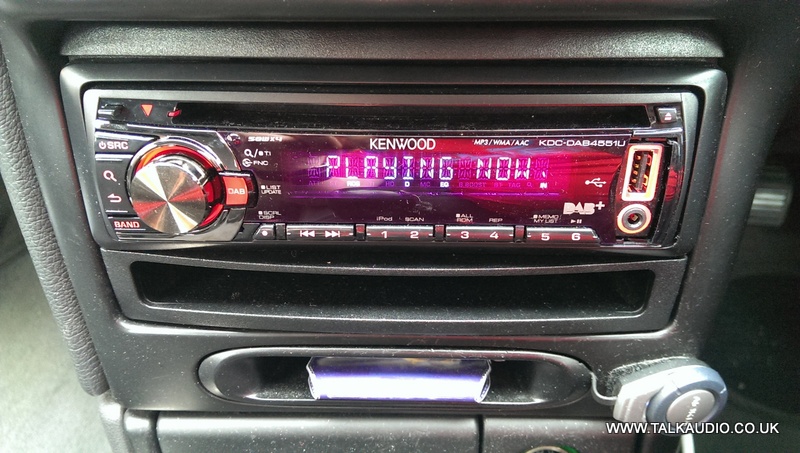
Sound Quality
Out of the box with no adjustment, the Kenwood sounded a touch thin and shouty. There’s the usual onslaught of BASS options, but surprisingly also a three band parametric equaliser with adjustable Q a very good effort on a budget deck. A few minutes spent with this was enough to leave the sound in an impressive state with CDs or high bit rate MP3 there is a heartening transparent quality, like it’s getting out of the way. Lower your bit rates or head over to DAB and it does its best to mask the drop in quality 112kB DAB is listenable if a little thin, but there’s a marked improvement when the bit rate gets to 128kB or even the heady heights of 192kB (sadly, only Radio 3 these days). Sub-bass in particular is disappointing on the 112kB channels sounding somewhat muddy and indistinct.
The good news is this deck is DAB+ ready, so when the UK government officially announces its DAB plans I’d be expecting to see some DAB+ stations in there as well. Hopefully, these will sound consistently better than the current mixed bag.
Unsurprisingly at this price point, something has to give and unfortunately it’s the number of pre-outs. One only, I’m afraid. This is switchable from non-fading sub to rear but it puts the deck out of the running for multi-amp users with no off board processing. It is commendably easy to get to the sub level control three clicks of the selector and bring on the Wob.
DAB Reception
Having attended the Digital Radio seminar at MEN Expo the other month I know how concerned installers are over digital radio aerials. Especially now that modern cars have all kind of fancy windscreens with anti-reflective coatings and heating elements that play havoc with windscreen mounted aerials. I was therefore pleasantly surprised with the performance of Kenwoods glass-mount aerial in my Mk2 Mondeo.
Make no mistake, fitting one of these is the slowest and most awkward part of the whole shebang, but do it right and the results are surprising. The Kenwood aerial is in two parts the aerial itself that sticks to the glass and the connection box that sticks to the aerial. It may have something to do with the Mondy’s heated element having quite wide gaps at the side, but I’m able to pull all of the local multiplexes in with very few issues I only get a small amount of break-up around a known local DAB blackspot. Driving from Loughborough to Wigan listening to Radio 4 Extra on the National DAB Network was a pleasantly seamless experience.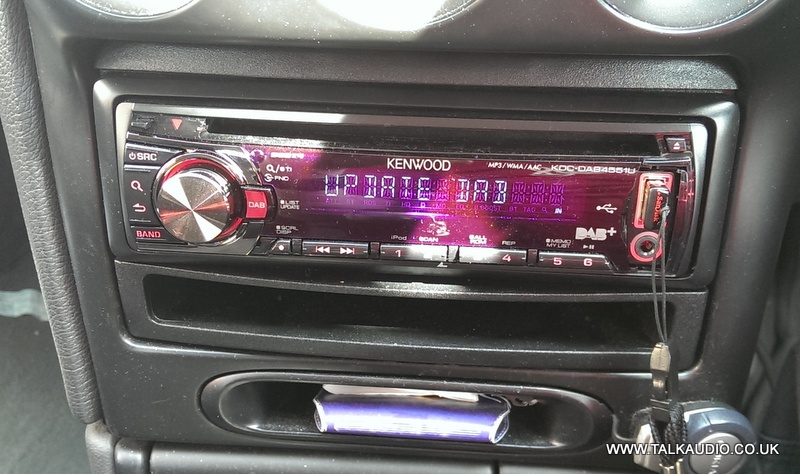
Miscellaneous
I’ve barely used the FM radio, but I have seen the deck switch from DAB to FM when the reception ran out (in a multi-storey car park). This is required functionality for the forthcoming Digital Radio Tick but it’s impressive to see it switch (and switch back!). I’ve had the occasional ‘˜iPod Error’, but this has been sorted by unplugging and replugging the iPod.
The only major headline feature that’s missing from this unit is Bluetooth. Fear not though, as this is available in the form of the BT-300u add-on which includes the microphone. Unfortunately, for some reason this item costs almost as much as the deck itself (£100) and for £200 there are some significantly better offerings on the market, one of them from Kenwood! Totally baffling.
Given the increasing complexity of modern car stereos it’s reassuring to see this deck has updateable firmware for both core functionality and the DAB tuner. I did a software update to 1.02 which to be honest hasn’t made any noticeable improvement but it was as simple as slapping the file on a USB drive (that still have music on it) and choosing ‘˜DAB Update’ from the menu. Takes about fifteen minutes and you do lose all your settings, but the instructions warn you about that beforehand.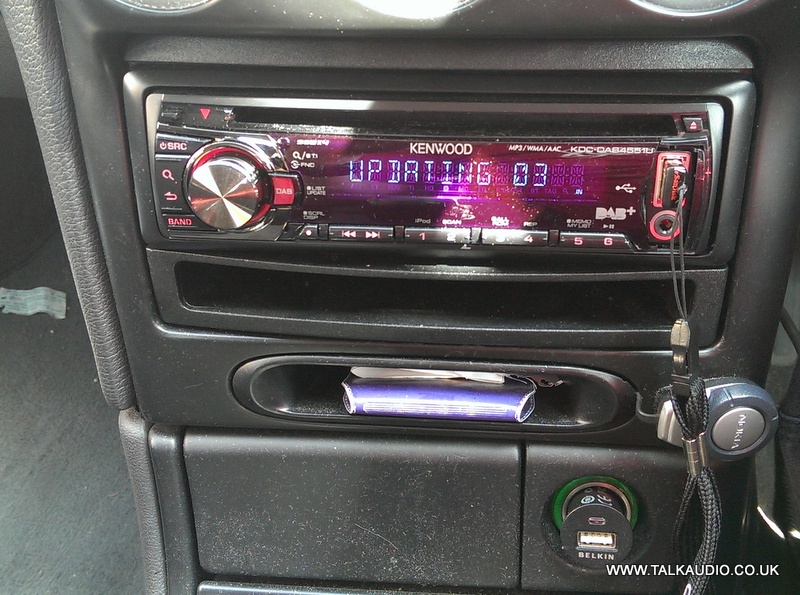
Final Verdict
Long term tests aren’t intended to replace the main TA review, but more work as a companion piece. With the original ratings in mind, we wrap up with our thumbs up and thumbs down. Add the two together, and away you go.
Thumbs Up:
Clean sounding deck, good DAB reception, good iPod Control
Thumbs Down:
Single pre-out, single line display, triple figure Bluetooth add-on box.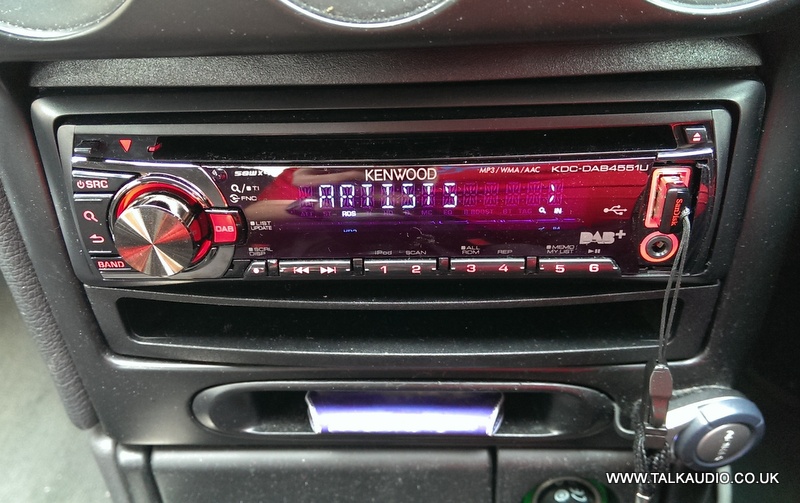
What is DAB+?
DAB+ is DAB but better. The type of ‘˜codec’ (or audio compression) used on DAB radio is now nearly fifteen years old. This MP2 ‘˜codec’ is quite inefficient by modern standards and with decent speakers you can clearly hear the trade-offs made to offer more choice on DAB stations. DAB+ allows digital radio to use a more modern type of codec (AAC+, exactly the same as used by Apple for the iTunes Music Store) and offer better sounding radio and more choice.
Post note from Editor Rayner!
DAMN, That lad’s GOOD! I may have the studio-fettled, loudspeaker maker’s proddy manager and even professional equipment tester’s EARS, but our man King knows his in-car equipment, knows his digital technology and loves this stuff. After a LONG time looking, I know Talk Audio now has more than just one writer! Simon King, I hereby remove the term ‘˜CUB’ from thine reporter’s status, matey!
Simon King. Cooler than your editor